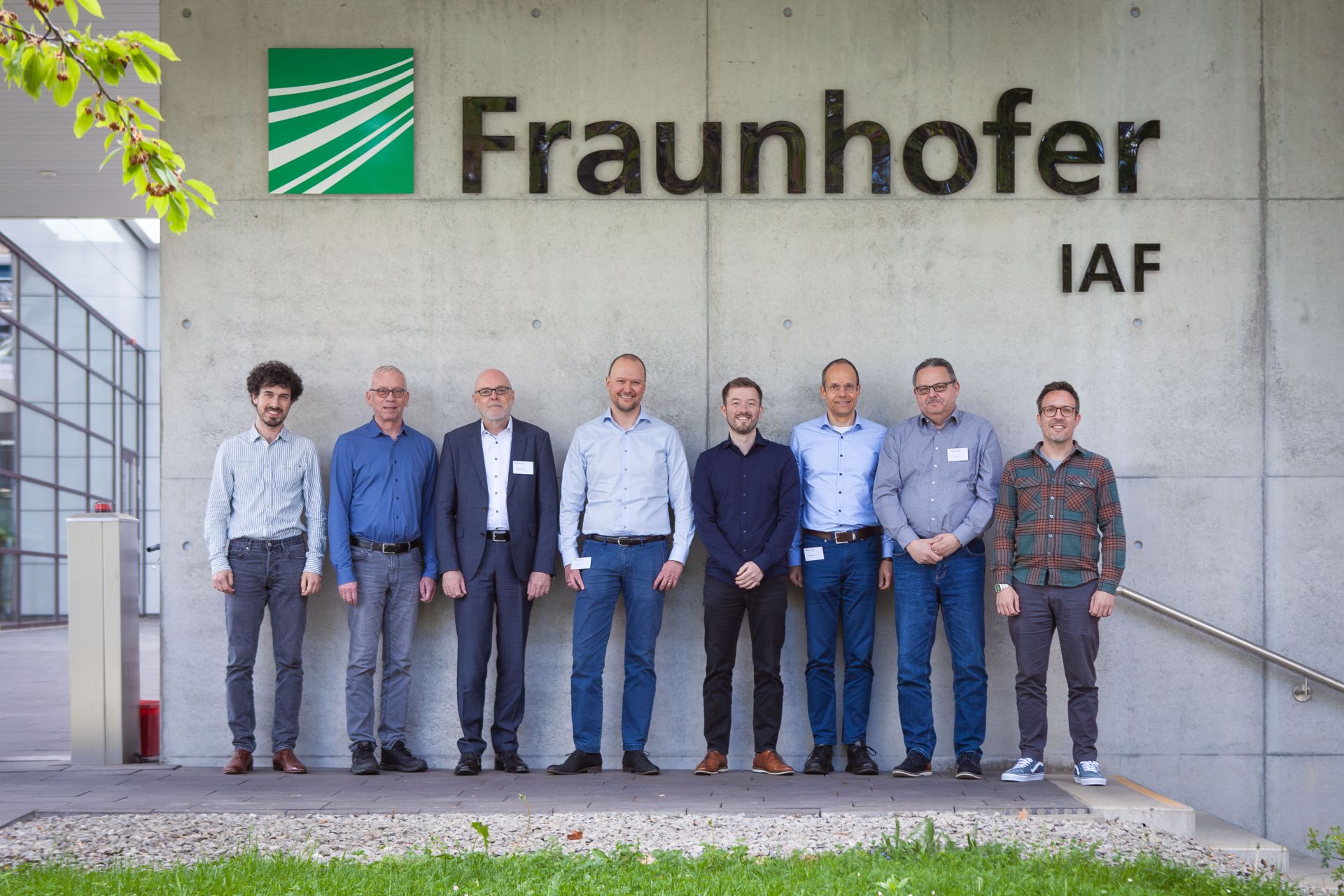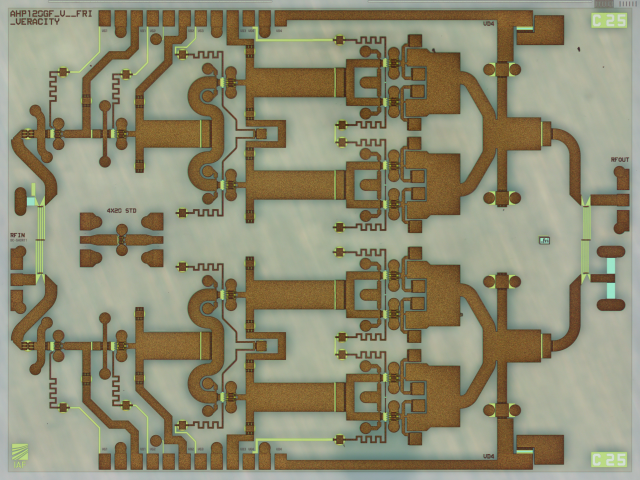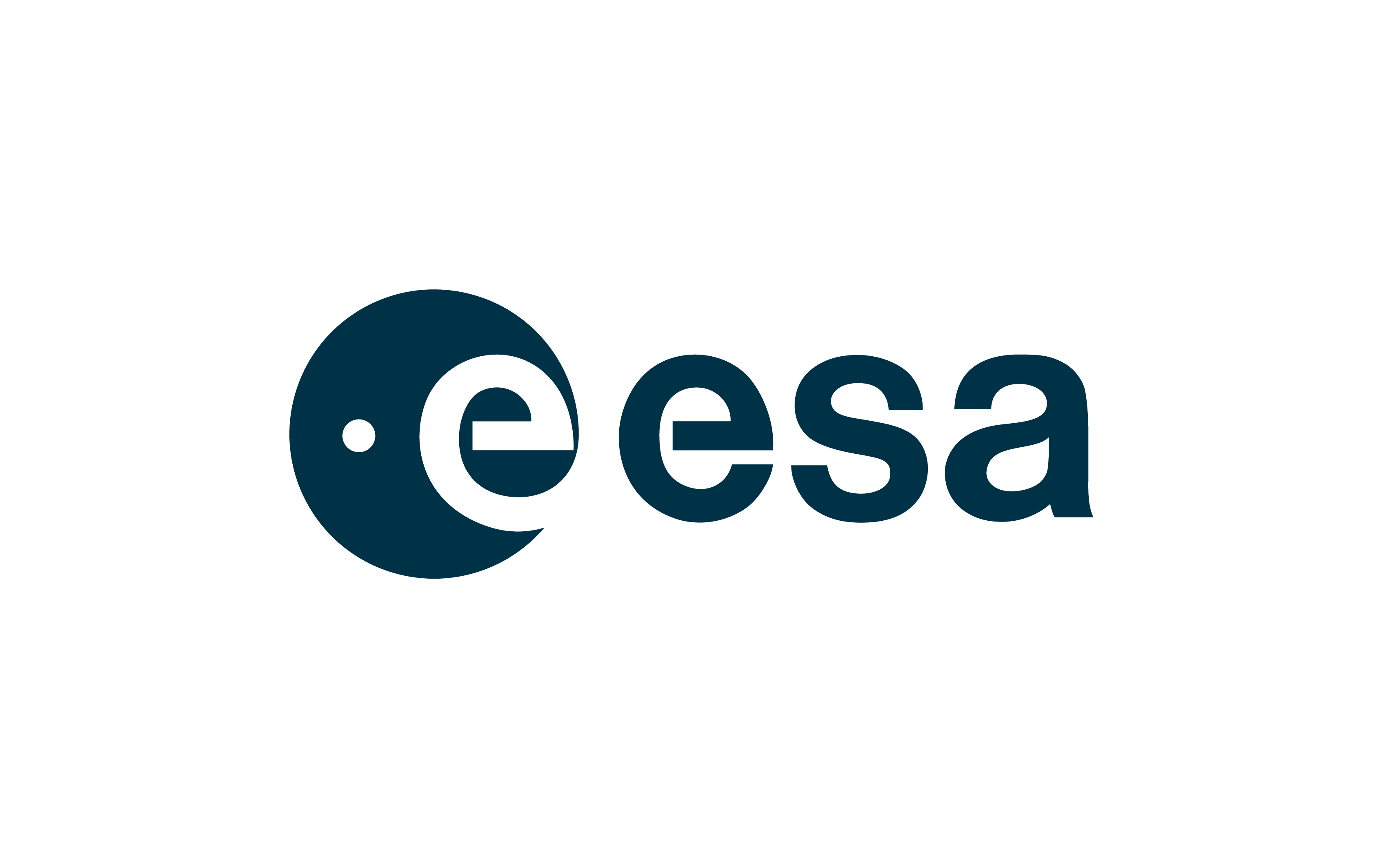Fraunhofer IAF launches ESA project Magellan
GaN transistors and high-power amplifiers for millimeter wave satellite communications
With increasing data rates in mobile communications, the need for more powerful high-frequency electronics is growing. This is particularly true for satellite-based global communication networks, which must function reliably and securely in all weather conditions and at any location. In the ESA Magellan project, researchers at Fraunhofer IAF, together with UMS and TESAT, are therefore developing novel efficient GaN transistors and high-power amplifiers for LEO and GEO communication satellites with high throughput by 2027.

Communication satellites and flying antenna platforms can contribute to the comprehensive and resilient operation of global mobile networks of the fifth and sixth generation (5G, 6G). However, as large parts of the millimeter wave (mmW) frequency spectrum must be reallocated for this purpose, more powerful radio frequency technologies are required for satellite communication in the Ka- (27–31 GHz), Q- (37.5–42.5 GHz) and W-band (71–76 GHz). These frequency bands offer greater power efficiency for mobile satellite internet (SatCom on the Move, SOTM) as well as feeder links and inter-satellite links (ISLs). In order to develop the necessary technology, the project Magellan — High Efficiency mm-Wave GaN Transistor High Power Amplifier for GEO and LEO Active Antenna Application — was launched in 2024.
In Magellan, the Fraunhofer Institute for Applied Solid State Physics IAF is working on behalf of the European Space Agency (ESA) to develop high-electron mobility transistors (HEMTs) and amplifier circuits for highly efficient satellite communication based on the wide-bandgap compound semiconductor gallium nitride (GaN). These are intended to operate in both low earth orbit (LEO, 200–2000 km above the earth’s surface) and geostationary earth orbit (GEO, 35,786 km above the equator). Further project partners in Magellan are United Monolithic Semiconductors GmbH (UMS) and TESAT-Spacecom GmbH & Co. KG. The project will run from 2024 to 2027.

GaN-based HEMTs and high-power amplifier MMICs with superior efficiency and linearity
“We want to develop a GaN technology that achieves significantly higher efficiency compared to the current state of the art. To make this happen, the gate length of the transistors is to be reduced to a size of less than 100 nm,” summarizes Dr. Philipp Döring, coordinator of the Magellan project at Fraunhofer IAF. However, very small structure sizes provoke disruptive short-channel effects, which have a negative impact on the reliability and performance of the component. The research team is therefore focusing on a new technology node with a cut-off frequency of more than 140 GHz. With this GaN07 technology to be developed, the researchers can avoid most of the short-channel effects and still meet the project requirements for the component.
The second overarching project objective is to realize monolithic microwave integrated circuits (MMICs) for solid-state power amplifiers (SSPAs) in Ka-, Q- and W-band using the newly developed GaN HEMTs. SSPAs are characterized by their compactness, robustness and low cost. The SSPAs manufactured using GaN07 HEMTs should also be more efficient, more linear and more resistant to cosmic radiation than currently available hardware. This overall package makes the GaN07 SSPAs very attractive for applications in space.
From technology development to industrialization
Fraunhofer IAF is coordinating the Magellan project. The institute is also using its extensive research infrastructure to develop the new GaN07 technology, implement the HEMTs and MMICs based on it and characterize and evaluate the hardware produced. The partners TESAT and UMS contribute their expertise in the application of MMICs in satellite communications and the commercialization of the components. The aim is to enable a European value chain from semiconductor development to space application.

The Magellan project is funded under the ESA ARTES Advanced Technology Program.
The use of the photos is permitted exclusively in connection with this press release and with indication of the copyright.
Last modified:
 Fraunhofer Institute for Applied Solid State Physics IAF
Fraunhofer Institute for Applied Solid State Physics IAF